Marketing Creative Brief Modernized with CMP
A single platform to store and share project details, automate content production & manage workflow
Book a Demo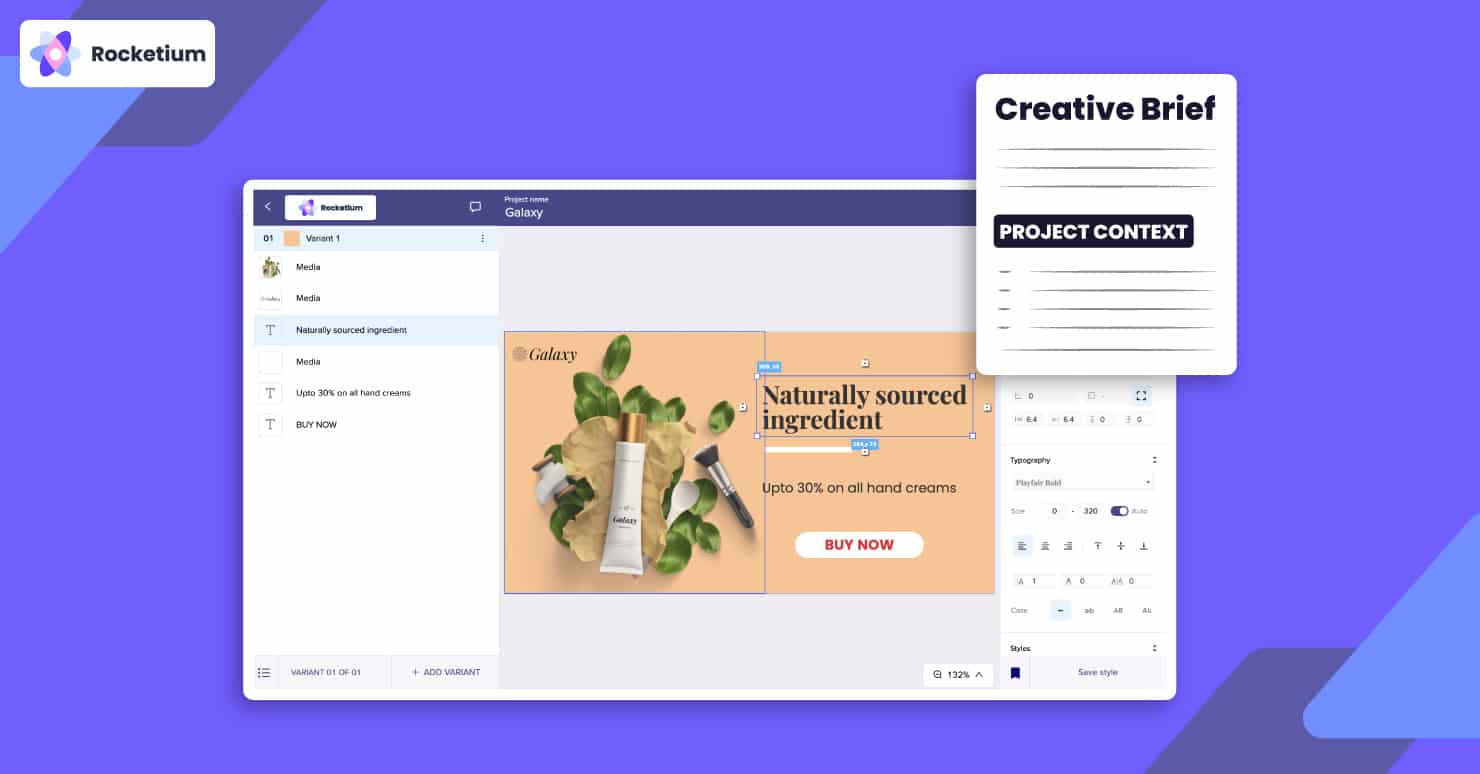
A single platform to store and share project details, automate content production & manage workflow
Book a Demo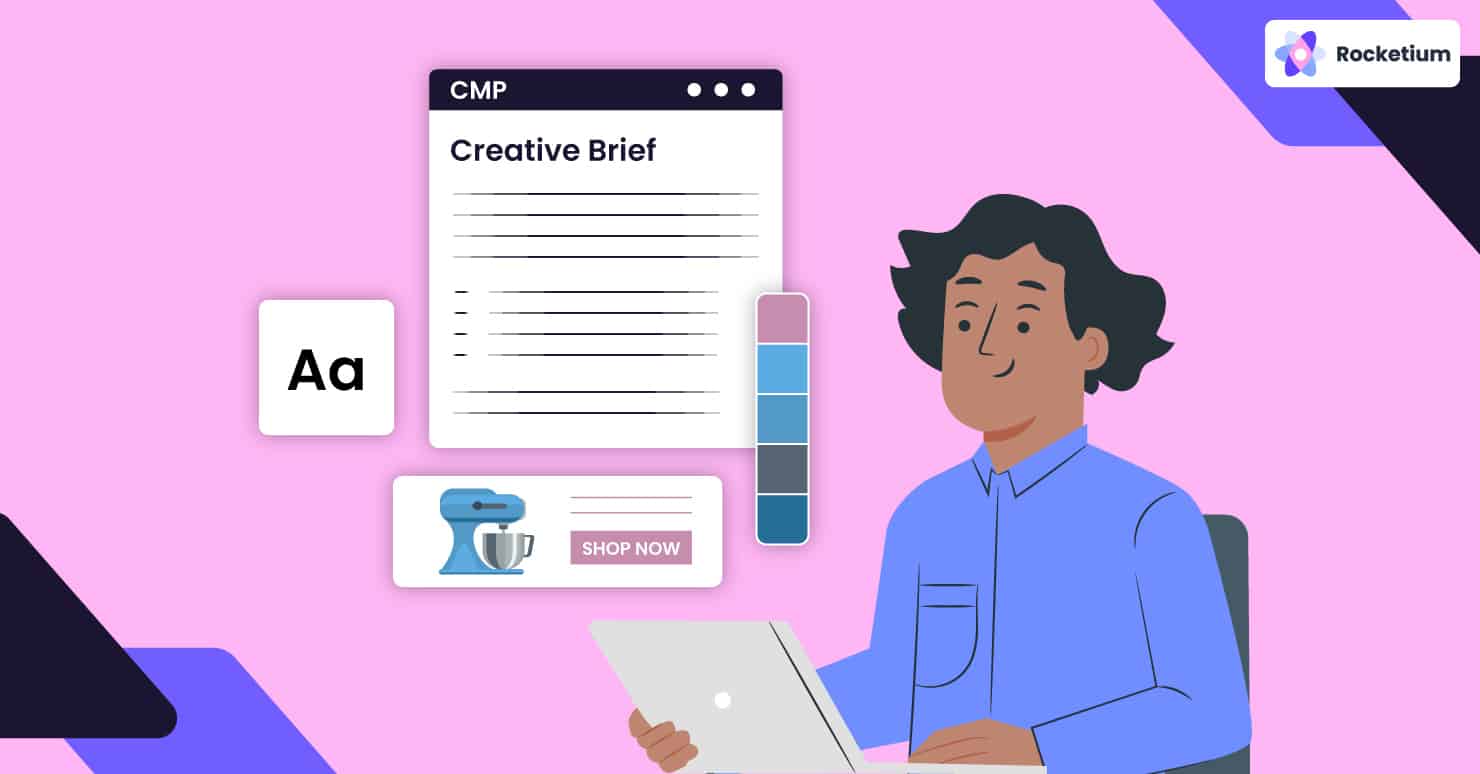
Are you still witnessing a lack of productivity even after spending hours meticulously creating a marketing creative brief?
Traditional marketing creative briefs tend to give poor results. Even the more well-prepared ones. This is because creative teams are often unable to follow them thoroughly, and they end up deviating from deadlines, budgets, and business priorities. The reason for it is simple but twofold. Marketing projects are complex and intricate, and a single document cannot include all of their moving parts.
On paper, everyone’s roles and responsibilities are defined. Marketing heads are responsible for ideation and strategy, while designers, copywriters, and the QC team execute the vision. But when it comes to practical work, often there is a lack of synergy among everyone associated with the campaign. Seamlessly collaborating and sharing the campaign deliverables with the right stakeholders becomes difficult.
And therein lies a major pain point that most marketers face today. A complete lack of a system to efficiently execute a creative brief. Enter, stage left: Creative Management Platform (CMP).

A marketing creative brief is the most commonly used format to guide the design of digital marketing collaterals. Almost 93% of creative teams use it as a roadmap to make creative assets to achieve specific marketing goals. Yet, 67% of professionals agree that they are ineffective at taking the creative process from concept to completion.
One, because not everyone knows how to write a creative brief. Converting a marketing strategy into a brief is an art because, essentially, it is “the first ad in the campaign,” as John Hegarty, BBH co-founder, once said.
Distilling an idea into concise and crystal-clear words so it becomes the cornerstone of winning marketing assets is not an easy ask. Writing a good creative brief that helps every member of the team navigate with ease and achieve the campaign goals is even harder.
Two, even with a great creative brief, there is no guarantee that it will lead to a harmonious workflow, ensure the creative process runs smoothly, and, ultimately, result in great marketing assets. As we said, there are too many moving parts in the creative and marketing teams, and a one-dimensional document is never sufficient to capture them all.
In today’s business environment, where marketers need to scale their efforts to personalize and run multichannel multi-regional campaigns, they require a suite of tools to reduce their workload, streamline workflows, and collaborate meaningfully. A creative management platform does just that. Essentially, all the items that constitute a good creative brief are efficiently facilitated and executed in a CMP.
Not all creative briefs are the same. Think of them as a sauce recipe. The basic layout is the same, but the quantities and ingredients can be tweaked. So, while some projects will need a detailed brief, others will require a fairly succinct one.
Using the same brief for all projects is a waste of effort – as without constant experimentation and variations you will not see a positive change in performance. Rewriting the brief for each project is a waste of time.
This is where a CMP comes in handy. It already contains all the key ingredients of a creative brief and empowers the team to create impactful assets. Think of the management platform as a mini-production agency that reduces time and improves ROI.
Irrespective of what the creative project is, one of the key ingredients of a creative brief is a general company overview. This encompasses everything from brand guidelines to color palettes, from brand typography to icons. A creative management platform allows you to set up these key visuals once and then reuse them.
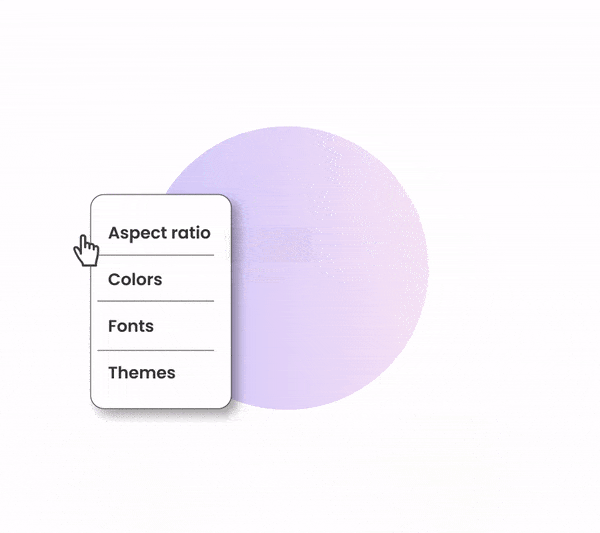
Creative teams can choose brand elements from presets and add them to new assets without having to search for them in some document that is stored in an X location. All styling can be imported, saving hours of effort and helping build visuals at scale.

By setting up rules from scratch like positioning control, automatic alignment of text, text box size, and more, teams can automate brand governance. Because you already know that the templates reflect your brand guidelines, managers don’t have to scrutinize each and every creative to ensure they are in line with your brand identity. As a result, both the consistency and speed of the team increase.
Another critical part of a creative brief is the ‘why’ of the project, which explains the pain point, the need, or the challenge. The creative team doesn’t require every molecular detail of the project, but they do need the broad strokes. With a creative management platform, it’s easy to set the stage for the project.
Once you create a new workspace for a campaign, you can establish the project context so that everyone associated with it is aware of it. With a ready background at hand, the team can shape their process accordingly.
Typically, a project context is mentioned in a Google Docs file and then shared with everyone working on a campaign, either by adding them to the doc or sharing it on other channels. Once the assigned individuals review the context, they switch to a design platform to start production.
This creates a one-sided process that is filled with friction. If a designer has to review the context again, they have to switch, for example, from Adobe or Figma to Google Docs. And if they have follow-up questions, there are numerous emails, Slack messages, and meetings.

In a CMP, both the creative brief and design tools are on one platform. It bridges any silos and makes the entire creative process almost conversational. Friction is reduced, workflow is streamlined, and there is better collaboration.
The third key element of a marketing creative brief is the target audience. The team needs to know the potential customers, from their demographics to their interests. The data enables them to create deliverables that have a quantifiable impact.
But understanding the audience is only one side of the coin. The other is creating assets personalized for each cohort of the pool.
However, it’s not easy to push out tailored campaigns, with design teams constantly battling the clock and the demand for adapts. A CMP makes this possible. The team feeds personalized data in a spreadsheet and imports it to the CMP. From there on, the platform takes over. It automatically extracts the data and generates the necessary creatives in bulk.
For marketing teams that translates into easily testing design concepts for different target audiences, without compromising on quality, context, or company identity.

From changing the image background or copy to suit the interests of a particular cohort to tweaking an element to match the age of a different cohort, CMP offers efficient targeting.
The fourth element of a creative brief is the descriptions of the final deliverables. Given that marketing projects use multiple media channels, the final file requirements of each creative generated vary, resulting in many variants based on size or test scenarios for experimentation.
Manually, adapting each creative to different sizes is busywork. Yet, it needs to be done — and done with complete focus. A premium CMP offers AI-based auto-sizing, where you can pre-save creative sizes for different channels. So, generating cross-channel assets in the right sizes becomes a matter of a single click, saving teams hours of menial work.
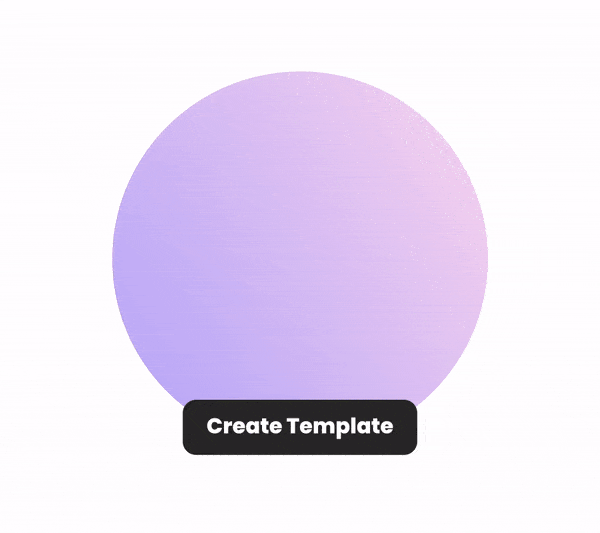
Winning campaigns are made through constant testing and experimentation. But when teams have to edit one tiny element in hundreds of creatives to test a strategy, it becomes a Sisyphean task. A creative management platform makes it effortless with bulk editing of copy, images, CTAs, and colors in assets in batches.

The next item in a creative brief is the ‘big idea.’ It’s the message the project must convey to the target audience and is frequently the linchpin of all marketing collaterals.
Generally, the copywriter takes the key message and delivers variations of it. But when a brand is A/B testing with copies or simply wants to refresh a campaign, the turnaround time is not enough to loop in writers, or worse, copywriters experience a creative block with the constant variation requirements.
With a CMP, teams can create copies from scratch in a fraction of the time by leveraging an AI copywriter. They can experiment by changing taglines, headings, or descriptions with the tap of a button, with the freedom to choose from multiple contextual versions.

Since the messaging is already set in the creative brief, refining and optimizing existing copies in real-time is also hassle-free. The AI stays true to the keywords and offers crisp copy that matches the ‘big idea.’
The marketing creative brief elucidates all the stakeholders, from who are the decision-makers to all the team members working on the campaign. It’s simple to assign roles and responsibilities on paper, but the lines get blurred in real life. A CMP allows role-based access control. You can define custom roles for each team member and grant access to the campaign creatives accordingly.
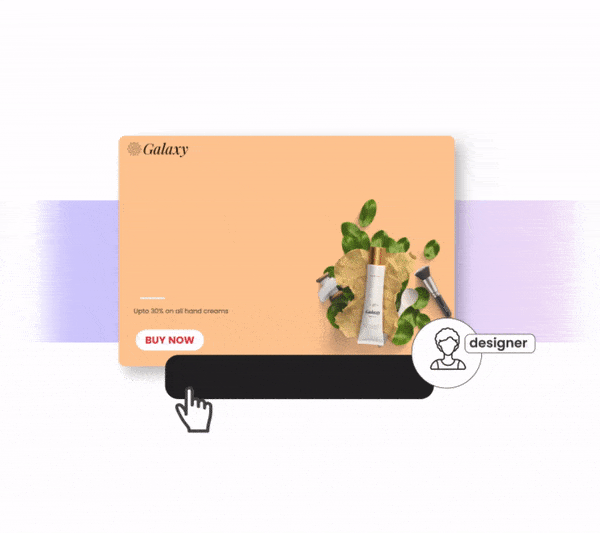
Furthermore, by leveraging a CMP, teams can meaningfully review creative assets by sharing view-only links or tagging teammates to get approval in real-time.

Such fine-grained configuration leads to stress-free campaigns where teams can follow the stakeholder guidelines in the creative brief to good effect.
The final element of a marketing creative brief is the timeline that illustrates the start date, milestones, and due dates for each, along with the final delivery date. A creative management platform permits unbeatable collaboration and flexibility through Kanban-style project management.
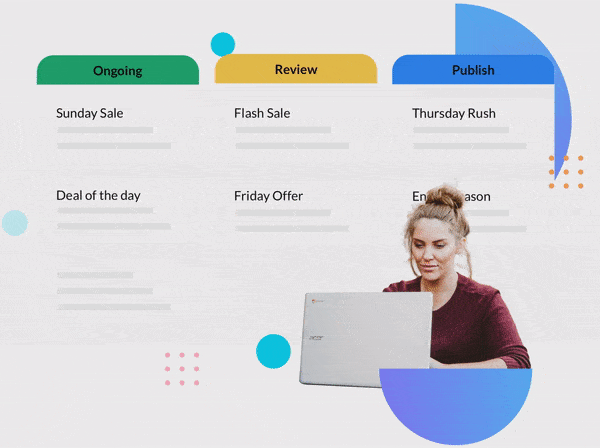
Teams can build dedicated workspaces for each subtask in the campaign, along with workflows. They can even organize the workspace in a structure that best suits the team.

Additionally, a CMP integrates with the tools the team already uses, granting them the ability to track campaign progress with deadline insight and manage business priorities accordingly.
Entering any marketing campaign without a creative brief is akin to flying blind. You’re not going to love where you land. But even with a well-written marketing creative brief, cracks occur.
Add to that the necessity for teams to be as agile as possible while delivering high-impact, high-volume creative assets, and even a great creative brief proves inefficient. What it lacks, a creative management platform can fulfill and do it with multifold productivity.
Rocketium is an all-in-one creative management platform that allows marketers and designers to leverage the power of cohesive marketing creative briefs and create, scale, and optimize multi-channel, multilingual marketing campaigns with ease.
Our clientele includes Amazon and high-growth unicorns like BigBasket, Swiggy, and Urban Company.